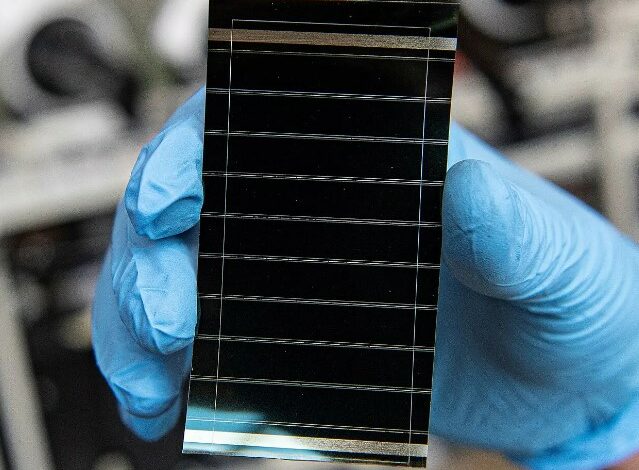Perovskite photovoltaics, the inverted architecture marks the record

Inverted architecture, advantages and disadvantages
(sustainabilityenvironment.com) – In the perovskite photovoltaic sector, a new cell design is rapidly emerging. It is what in the field they call inverted architecture or p-i-n architecture. What is it? A new order of charge extraction layers deposited on the substrate, compared to the industry standard. Or more precisely their complete reversal.
Although the n-i-p architecture is the most studied and successful for perovskite solar cells, its “reflected image” is making its way through several advantages. Starting from simpler manufacturing processes, the reduction of energy input in terms of interstate and its high stability. Not to mention that the inverted design simplifies tandem integration with other solar cells and opens the door to roll-to-roll printing. However, it still presents challenges, such as less efficient conversion of light into electricity.
A group of scientists from Northwestern University, Illinois, is advancing this side of research today. As their publication in Science explains, the team has found a way to raise efficiency to 25.1%, a new world record for the category. “Perovskite solar technology is moving fast and the emphasis of research and development is shifting from the absorber to the interfaces,” said Northwestern professor Ted Sargent. “This is the critical point to further improve efficiency and stability“.
Two new molecules for perovskite photovoltaics
Instead of helping perovskite photovoltaics absorb more energy, Sargent and colleagues focused on how to retain electrons generated at the interface with the transport layer. The goal was to avoid two problems: the possible recombination of electrons in their holes and surface recombination with surface defects in the material. The team developed two different passivation molecules, each preventing precise recombination: a sulfur-modified methylthium molecule provided chemical passivation and a diammonium molecule rejected the holes.
“We need to use a more flexible strategy to solve the complex interface problem,” said Cheng. “We can’t just use one type of molecule like we used to. We use two molecules to solve two types of recombination, but we are sure that there are multiple types of recombination related to skin defects. We must try to use more molecules to ensure that they work together without destroying their functions”. The team achieved an efficiency of 25.1% for its perovskite photovoltaic inverted architecture, certified by the NREL. Not only. The cells worked stably at 65 ºC for more than 2,000 hours.





